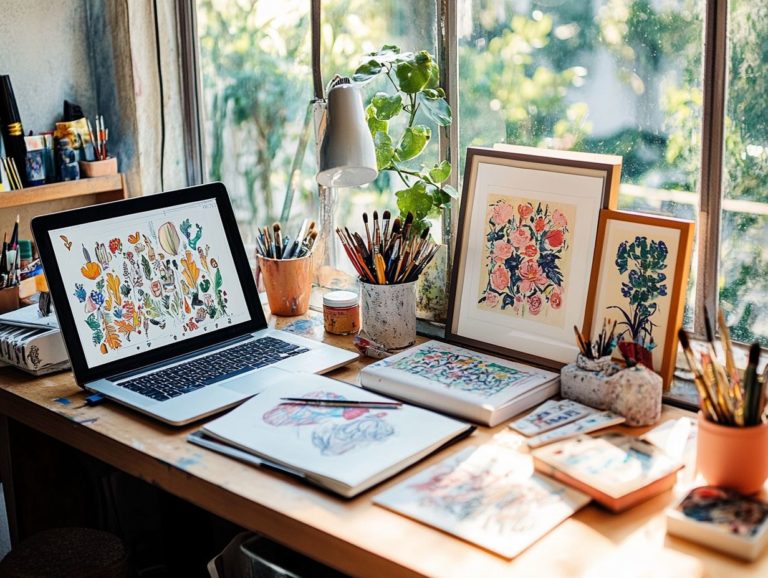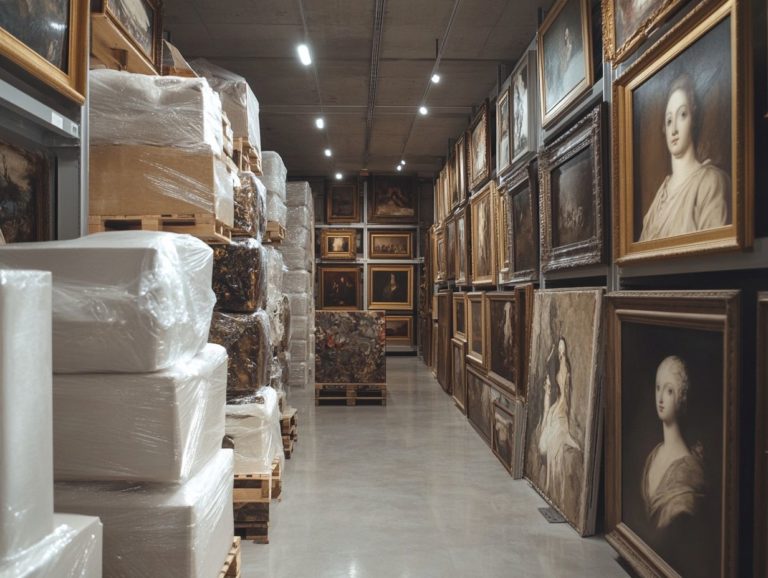The Role of Provenance in Art Collection
Provenance, the history of ownership for a work of art, is a cornerstone in the art world, affecting everything from its value to its authenticity.
This article delves into the meaning of provenance, the methods used to establish it, and its profound influence on the art market. It also discusses controversies surrounding ownership and repatriation, shedding light on how provenance guides buying and selling decisions.
By grasping these essential aspects, you can confidently navigate the intricate landscape of art, enhancing your experience as a collector or enthusiast.
Contents
- Key Takeaways:
- Understanding Provenance in Art
- How Provenance is Established
- The Impact of Provenance on Art Value
- Provenance and Authenticity
- Controversies Surrounding Provenance
- Provenance and Art Market Trends
- Frequently Asked Questions
- What is the role of provenance in art collection?
- Why is provenance important in art collection?
- How can provenance impact the value of an artwork?
- What are some common ways to establish provenance?
- How does provenance affect the authenticity of an artwork?
- How can provenance be used as a tool for identifying stolen or looted art?
Key Takeaways:
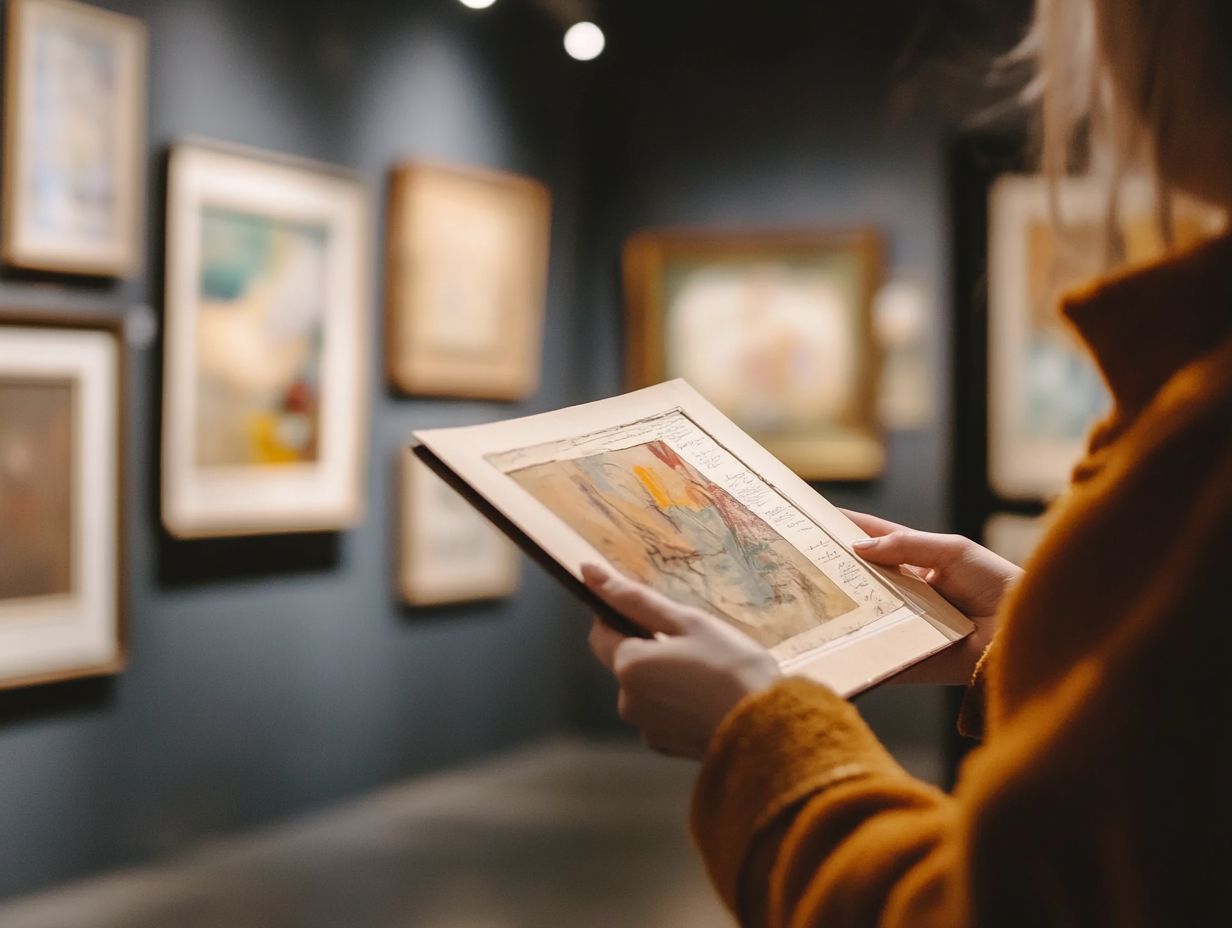
Provenance is essential it can make or break the value of an artwork! It provides important information about an artwork’s history and authenticity. Establishing provenance involves various methods and sources, such as documentation, scientific analysis, and expert opinions. The provenance of an artwork can greatly impact its value, with factors like ownership, historical significance, and controversies surrounding its origins influencing its market price.
Understanding Provenance in Art
Understanding provenance in art is essential for tracing the journey of a piece from its creation to its ownership history. It reveals intricate stories that captivate art collectors and institutions alike.
Provenance not only elevates the artwork s market value but also acts as a fundamental pillar for establishing legal ownership, authenticity, and cultural identity. It provides protection against theft and forgeries.
In today s landscape where thorough documentation is increasingly vital, especially with the emergence of digital records and a digital method of tracking ownership grasping the significance of provenance in art history has never been more crucial.
It influences both the narrative and the market value of artworks, ensuring you make informed decisions in your art investments.
Definition and Importance
Provenance refers to the history of ownership of an artwork, offering invaluable insights into its authenticity and market value. It plays a pivotal role in establishing the legitimacy of an artwork, particularly in the fiercely competitive art market.
By carefully tracking the lineage of an artwork from its inception to its current custodian you can determine its significance and worth.
Take the ‘Salvator Mundi,’ attributed to Leonardo da Vinci; its fragmented provenance sparked a bidding war at auction, highlighting the direct connection between verified ownership and art valuation. Similarly, Picasso’s ‘Les Femmes d’Alger,’ which fetched a record price, serves as a prime example of how robust provenance can bolster buyers’ confidence.
This reinforces the importance of thorough documentation in both art history and ownership tracking.
How Provenance is Established
Establishing provenance is a nuanced endeavor that requires careful research, expert validation, and exhaustive documentation.
This process results in a complete ownership history of the artwork, ensuring that every detail is accounted for and expertly presented.
Methods and Sources
You will encounter a variety of methods and sources to determine the provenance of artwork, including art institutions, auction houses, and historical documentation.
As you delve into archival research, you ll sift through historical records, letters, and catalogues that illuminate the artwork’s past ownership.
Expert opinions from art historians and appraisers are also essential in this process; their informed evaluations can confirm or challenge established narratives with precision.
Auction house records prove invaluable, revealing bidding histories, past sales, and ownership transitions.
By combining these resources, you create a robust framework for verifying authenticity, enabling you and others in the art community to appreciate not just the piece itself but also its remarkable journey through history.
The Impact of Provenance on Art Value
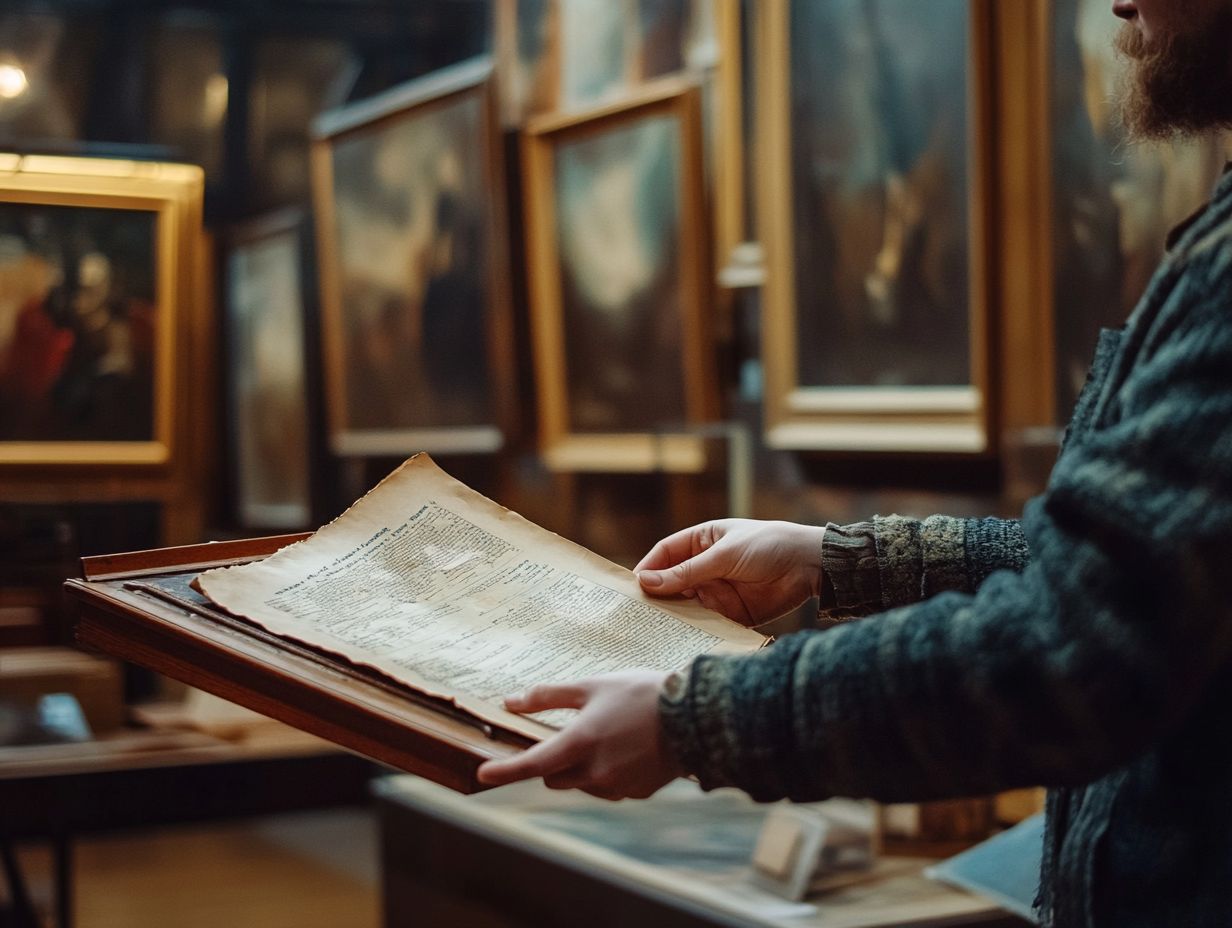
Provenance plays a crucial role in shaping the value of an artwork within the art market.
It influences the decisions of art collectors and determines whether a piece is deemed worthy as an investment.
Factors that Affect Value
Several factors shape the value of art, including provenance, authenticity, historical context, and current market trends.
Provenance is particularly significant; it tells the story of ownership and can greatly amplify an artwork s appeal, revealing its fascinating journey through time and the hands of past collectors.
Equally important is art authenticity, which serves as the validation of a piece as genuine. A verified work by a celebrated artist tends to command higher prices than one lacking authentication.
Understanding the historical context of an artwork enables collectors and investors to appreciate its significance within the broader narrative of art movements or societal evolution, which can make it even more desirable.
Current market trends can greatly influence demand. Certain styles or periods might suddenly strike a chord with buyers, resulting in price surges that leave a mark on the art world.
Provenance and Authenticity
Provenance is essential for demonstrating the authenticity of an artwork. It offers vital documentation that effectively counters claims of forgery and establishes the legitimacy of signatures.
Proving Authenticity Through Provenance
Proving authenticity through provenance demands rigorous research and expert verification, often elevated by modern technology used in art.
Integrating advanced techniques like blockchain a secure way to record information, making sure ownership is clear to record ownership histories, AI-based image recognition for artwork comparison, and scientific analysis for material examination are all vital components of this intricate process.
These innovations not only streamline verification but also strengthen trust among collectors and institutions. By harnessing these technologies, you effectively combat forgeries and misattributions while reinforcing the historical significance of each piece.
This exciting approach to provenance lets you create a captivating story around each artwork, ultimately enhancing its cultural value and financial worth.
Controversies Surrounding Provenance
Controversies surrounding provenance often arise from complex issues of ownership and repatriation, especially in cases involving art theft and legal claims of ownership.
Issues of Ownership and Repatriation
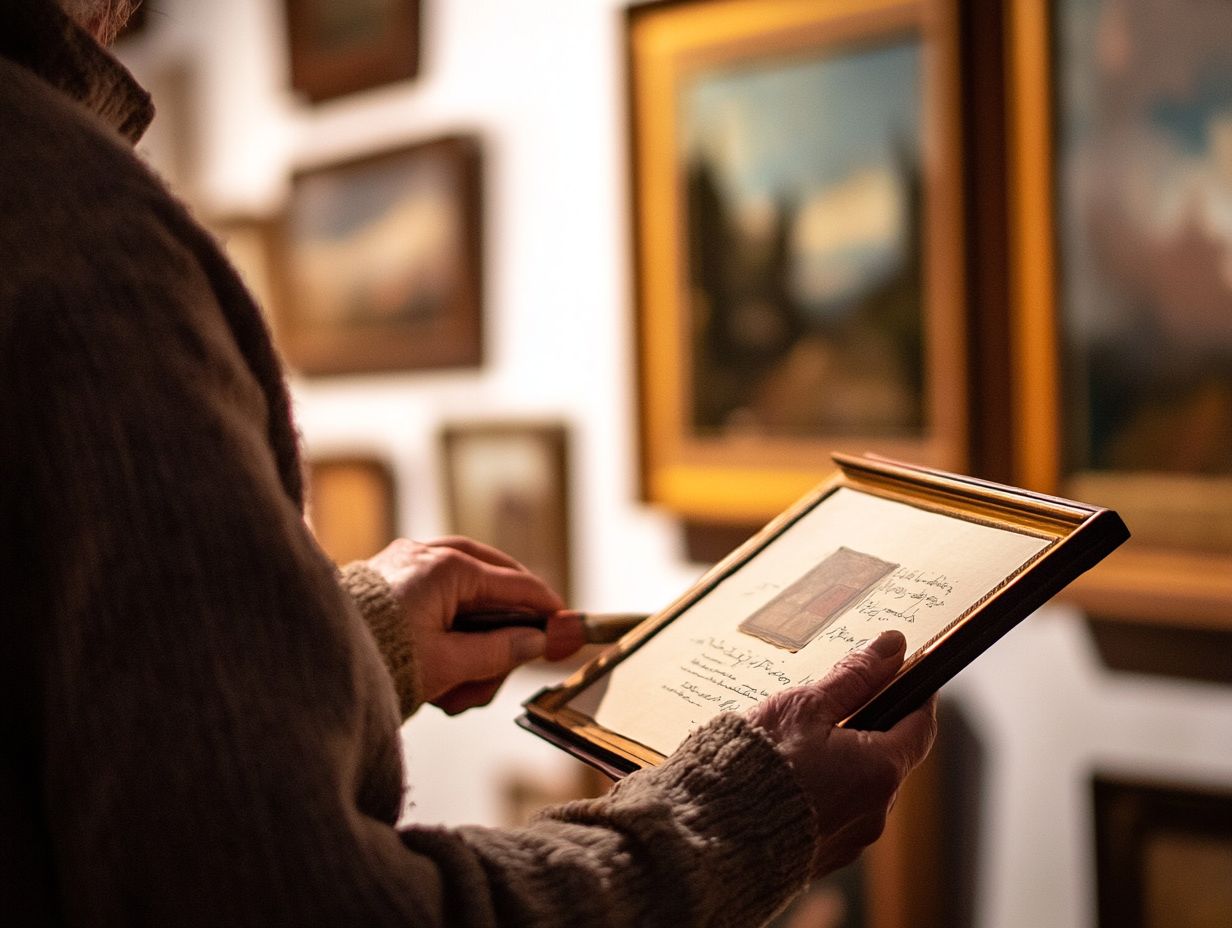
Ownership issues and art repatriation are critical topics in the art world, especially regarding artworks stolen during the Nazi Era and the cultural identity tied to them.
These disputes extend far beyond mere legal skirmishes over possession; they dive deep into the cultural and historical narratives of communities that have been profoundly affected by such actions.
For instance, various museums and collectors grapple with the responsibility of returning pieces that hold immense significance for their countries of origin, often leading to intricate negotiations.
The act of returning these artworks can catalyze a transformative impact on cultural identity, allowing communities to reclaim their heritage and history.
Efforts to return these treasures such as initiatives led by organizations advocating for indigenous rights highlight the necessity of acknowledging past injustices and striving for reconciliation with affected cultures.
Provenance and Art Market Trends
Provenance holds a pivotal position in shaping the dynamics of the art market. It significantly influences the buying and selling decisions made by collectors and institutions alike.
Understanding the history behind a piece not only enhances its value but also informs the strategic choices you make in your art investments.
Influence on Buying and Selling Decisions
The influence of provenance on your buying and selling decisions is profound, as art collectors often rely on documented histories to gauge market value. This reliance isn’t just about seeking authenticity; it s also about the psychological comfort that a well-documented background provides.
When you consider acquiring pieces with rich narratives, the emotional connection you develop can often outweigh mere financial calculations. The economic implications of provenance are significant; artworks with prestigious histories typically command higher prices in the market, fueled by competitive bidding and their rarity.
By understanding these dynamics, you can navigate the complexities of the art world more effectively, solidifying your confidence in your investments.
Frequently Asked Questions
What is the role of provenance in art collection?
Provenance is the documented history of an artwork. It includes ownership, exhibitions, and authenticity, helping to verify its significance.
Why is provenance important in art collection?
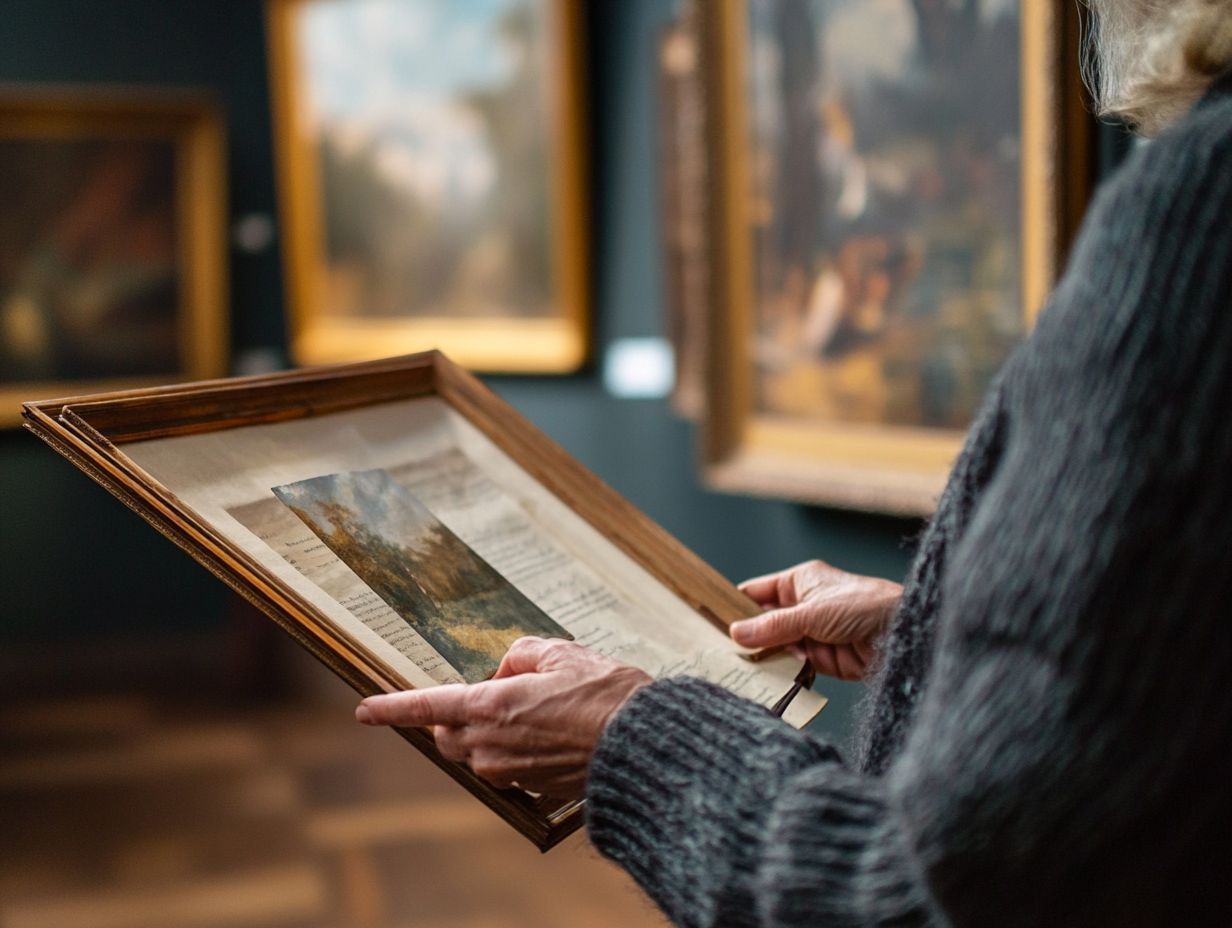
Provenance adds value and credibility to an artwork. Understanding its history can impact market value and enhance its cultural context.
How can provenance impact the value of an artwork?
Provenance significantly affects an artwork’s value. A prestigious history can lead to higher prices in the art market, while dubious origins can make it less appealing.
What are some common ways to establish provenance?
Provenance can be established through various documents. This includes artist documentation, exhibition catalogs, sales receipts, and expert opinions.
How does provenance affect the authenticity of an artwork?
Provenance verifies an artwork’s authenticity. A solid provenance assures buyers, while questionable origins may raise doubts.
How can provenance be used as a tool for identifying stolen or looted art?
Provenance is crucial for identifying stolen or looted art. Tracing ownership history can reveal if an artwork was illegally obtained, aiding in its return.


